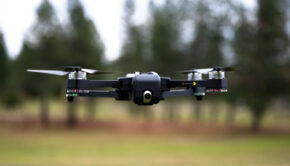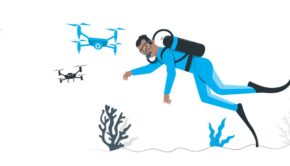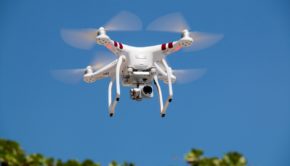Drones and 3D Mapping for Rock Climbing
While most Americans think of drones as a way to receive their Amazon packages faster, drones actually can serve many other purposes. Drones may be the wave of the future in finding and setting new rock climbing routes using 3D mapping, while removing the element of danger.
Hobbyist drone pilots who also enjoy the sport of rock climbing should consider joining the two interests together. Photogrammetry (using photography to measure distances between objects) and light detection and ranging (LiDAR) mapping can be used in tandem to create new rock climbing maps without ever having to make a first ascent.
Drones with cameras are quickly replacing large aircrafts for gathering information, as a result of being more cost effective, and their ability to fit in smaller spaces to record data. With the use of LiDAR equipment, you can record the depth and distances of rock faces to create 3D maps of potential routes.
LiDAR uses rapid fired lasers to obtain measurements of objects with incredible accuracy. The calculations are made in relation to the known speed that light travels and the calculated distance between the target and the drone. Integrated GPS systems and calibration data know the location of the LiDAR. The LiDAR lasers use different types of light (i.e. visible, ultraviolet, infrared, etc) depending on which product you select.
Historically, rock climbing routes were found and documented by ambitious climbers setting out on slabs, with nothing more than visual data gathered from the ground. For most adrenaline junkies, this may seem thrilling and even appealing — but for those that are more calculated, drone flights may be the best solution for developing, setting and naming your own routes.
If you are considering developing your own rock climbing guide for an area that you have decided to bolt or develop, you will have to fill out the guide with photos of the area. Take a lesson on taking photos with your drone that have appropriate symmetry in order to aid climbers in finding your routes easily. These 3D maps can be laid over photos taken of the rock faces to create the traditional beta maps seen in guidebooks. You can compile a small collection climber’s beta as an insider’s guide to share with the rock climbing community.
Most cities do not have any rules or laws that prohibit you from bolting routes on boulders or slabs in city parks and other areas. However, the regulations on drone use are constantly changing, so make sure to check your local area’s rules and regulations before taking flight. Take note that it is unsafe for inexperienced operators to fly a drone when a rock climber is on route. Although a rope has yet to be severed by a drone, there are documented cases of lacerations caused by the impact of a drone on a climber.
Combining your hobbies can help you to create a long lasting contribution to the climbing community while getting to utilize fascinating advances in technology. Consider recruiting fellow climbers to help you gather beta and design your very own climbing guide for this spring climbing season.















